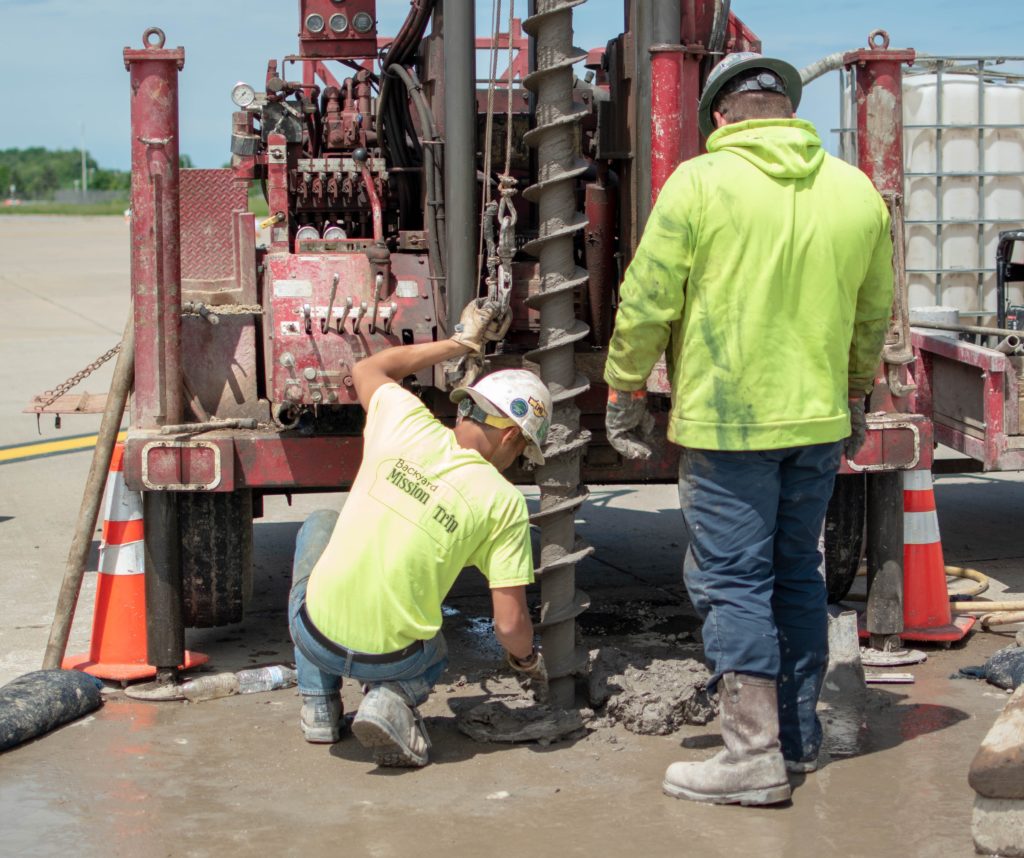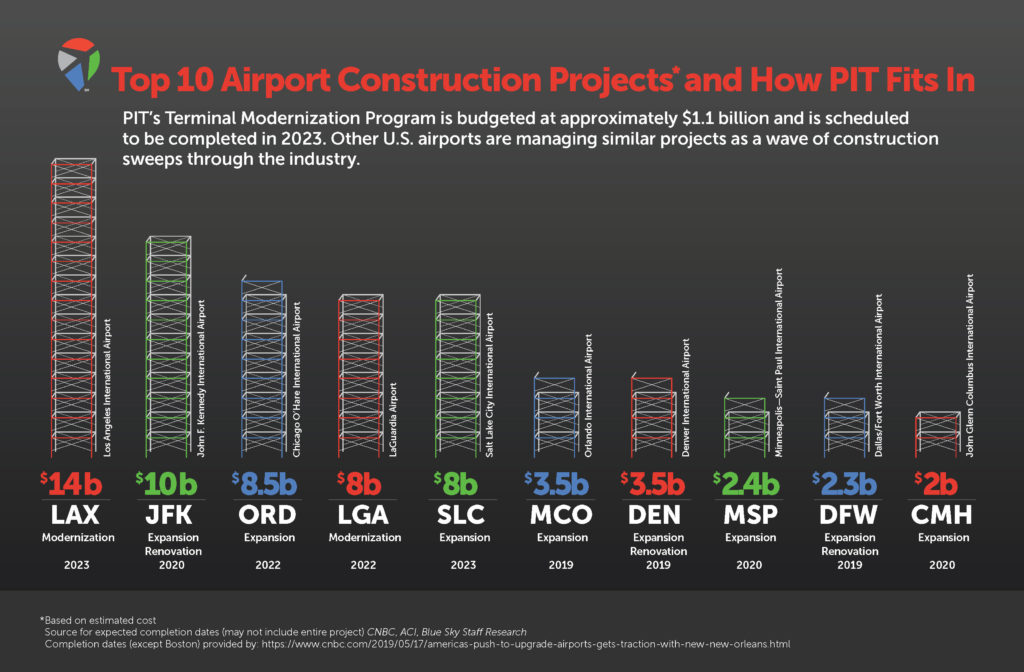Airports Across the U.S. in Midst of Modernization Boom
Aging, outdated airport infrastructure and desire for improved service driving construction projects
By Alyson Walls
Published May 31, 2019
Read Time: 4 mins
Unlike the Hollywood version of baseball fields in Iowa, for U.S. airports, it’s a case of they will come before you build it.
“They” is passengers. Lots of them. And those passengers have increased needs and high expectations for service from facilities built for a different era.
But airports throughout the U.S., like much of the country’s aging transportation infrastructure (highways, bridges, etc.), have not kept pace with industry changes and user demand over the past three to four decades. In fact, Airports Council International – North America estimates that U.S. airports have nearly $130 billion in infrastructure needs through 2023.
Kevin Burke, president and CEO of ACI-NA, said airport terminals generally are built to last 25 to 30 years and the average airport facility in the United States is 40 years old.
“So many of our airport terminals are at the end of their useful life; they aren’t designed for the travel experience passengers expect and deserve,” Burke said, adding that every major airport in the U.S. (including Pittsburgh International) was built prior to 9/11 and a slew of new security requirements.
Perfecto Solis, director of Pittsburgh International’s billion-dollar Terminal Modernization Program, says airports need to invest in updates for several reasons, including the increasing number of enplanements at airports in the U.S. and around the world as growing economies and developing middle classes have fueled air travel. In other cases, like PIT and other former hubs, original systems are at the ends of their useful lives and the original function of the facility doesn’t match current market needs.
“Those factors set up interesting dynamics between airlines and airport directors, who are trying to best manage funds and take on debt to finance major capital projects,” Solis said.
Solis, whose background is in civil and structural engineering, has more than 35 years of experience in airport capital development programs including runways, control towers and supervising design and construction work on the people mover and Terminal D expansion at Dallas/Ft. Worth Airport.
He said current needs vary from airport to airport, from expansion projects to replacing complex baggage handling, security screening and other outdated systems, along with adding new access roadways, concessions space and parking facilities. Updates are needed to accommodate services that did not exist 10 years ago, such as the proliferation of smart phones, ride-sharing and on-demand meal delivery to gates.
Airports also must consider an ever-growing list of “what if” features prompted by security changes, including securing baggage claim areas and installing bomb-proof glass.
“The reality is airports are incredibly expensive enterprises, both from operating and infrastructure perspectives,” Burke said.
Financing Airport Improvements
At least 16 major construction projects at metropolitan U.S. airports are all scheduled for completion within the next five years. From a $14 billion modernization at Los Angeles’ airport to a $2 billion project in Columbus, airports across the country are investing in their facilities.
But airports are increasingly constrained in their ability to pay for these projects, and it is a common misconception that airports are funded with taxpayer dollars.
Although nearly all U.S. airports are owned by state or local governments, or operated by authorities like PIT, airports are required by the federal government to be as self-sustaining as possible, and thus receive no local taxpayer dollars. This means that airports must operate like businesses: funding their operations from their revenue through parking, concessions, airline fees and other streams and responsibly planning for major improvement projects, which can often be expensive.
To finance the large-scale infrastructure projects, airports utilize bonds and pay them back over time with airport revenue and the Passenger Facility Charge (PFC) user fee, the nominal fee passengers pay when they buy their airline tickets. Currently capped at $4.50 nationwide, the PFC has not been increased since 2000.

Crews conducted drilling last week to prepare the construction site for the new terminal to be built between Concourses C and D. (Photo credit: ACAA)
Burke said upping the PFC would allow airports to do what they do best: serve their passengers with safe, secure, and efficient facilities, as well as effectively plan for the future. He argues it should be a no-brainer, although airlines have opposed increases in the PFC.
“Did you know that the airlines spend about the same on airport operations as they do in-flight snacks? Airport operating costs account for less than 6 percent of an airline’s total operating cost,” he said.
Aside from funding, Solis said airports also face ongoing challenges during large construction projects including the ability to maintain passenger growth, provide a superior level of customer service and increase airport revenue.
He added that the Terminal Modernization Program at PIT has unique benefits in these areas compared to others because operations can continue largely uninterrupted during construction due to the configuration of the airfield and terminals.
“We expect to separate the construction footprint from the secure and active areas of the airfield, lessening the impacts to travelers and employees, while also keeping costs down,” he said. “Plus, our team has been hyper-focused on the customer experience from the very beginning, so we’re constantly thinking about how to do the work most efficiently both from a cost and user perspective.”
Watch
This Next
Read
This Next






